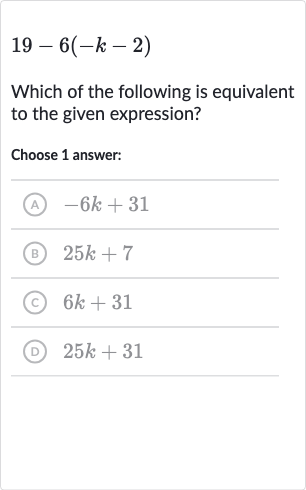Full solution
Q. Which of the following is equivalent to the given expression?Choose answer:(A) (B) (C) (D)
- Distribute across terms: Distribute the across the terms inside the parentheses.
- Combine distributed terms with constant: Combine the distributed terms with the constant outside the parentheses.
- Add constants: Add the constants and .
- Combine result with : Combine the result from Step
3 3 6 6 \newline 6 6 31 31 - Match result with choices: Match the result with the given choices.
\newline 6 k + 31 6k + 31
More problems from Identify equivalent linear expressions I
QuestionGet tutor help
QuestionGet tutor help
QuestionGet tutor help
QuestionGet tutor help
QuestionGet tutor help

